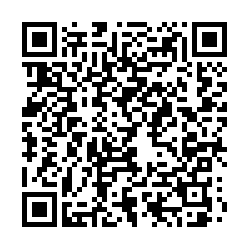On Meat and Cattle - Part 1
Last updated: June 19th 2022
- Cattle have always been important to humans. The oldest known figurative rock art in the world is that of cattle in a Borneo cave, dated to at least 40,000 years old. Cattle were often drawn on walls of tombs, reflecting their importance to the family lifestyle.
- "In size these are somewhat smaller than elephants; in appearance, color, and shape they are as bulls. Great is their strength and great their speed, and they spare neither man nor beast once sighted. These the Germans slay zealously..." – Julius Caesar on the aurochs (58 BC)
- Aurochs were 2x the size of the largest modern cow. There is no exact record or physical evidence of how, when and where Stone Age humans tamed and bred them. But they sure must have done it carefully cos, in addition to their size, aurochs were as fierce as bears or lions.
- Large skeletal remains (6 ft. at the withers, 3 ft. horns) of cattle representative of Zebu cattle are some of the oldest found, in the Indian subcontinent. The first settlers of Gökçeada, Turkey were agriculturalists, and introduced cattle to the island as early as 6500 BC.
- Fast-forward to 1700s England. Robert Bakewell (1725–1795) used inbreeding techniques to develop breeds, and became basically the father of systematic artificial selection. As more farmers followed his lead, farm animals increased dramatically in size and quality.
- Meat production economics influenced science: Charles Darwin took inspiration from the aforementioned Robert Bakewell's cattle breeding work, describing it as "artificial selection". Darwin refers to Robert Bakewell's work in "On the Origin of the Species."
- Jumping back: Europeans brought heifers and calves to the Americas already in the 1490s, Columbus himself bringing some along in his second trip in 1493. Other Spaniards introduced cattle to North America's southwest in the Coronado expedition of 1540.
- The term "Uncle Sam" traces back to an early pioneer of the American meat industry. Sam Wilson from Troy, NY, packed salted meat into barrels – stamped "U.S." – that were sent to feed the US army during the War of 1812. Soldiers started referring to them as "Uncle Sam's beef."
- Gil Y'Barbo (1729–1809), a pioneering settler of Nacogdoches, Texas, is recorded as having a ranch that was "already a pueblo" which had lots of cattle. Dairy cattle in the Pacific States was 29,203 in 1850, and 314,573 in 1860, an increase of over 97.5%, the main share in California. fun fact: the dairy vs. non-dairy cattle population ratio remained almost exactly the same during that increase
- 1957 was a major year. Andy Anderson and Currier Holman founded Iowa Beef Packers. The original scope was harvesting, but they ended up revolutionizing the industry by eg. switching from selling standard carcasses to smaller cuts of boxed beef. Happy customers, angry competition.
- Unions were really butthurt. In the most violent strike in 1969, homes were bombed and there was a shooting death. The main issue was the union's refusal to accept the boxed beef concept, cos it threatened to put the meatcutters union's grocery store butchers out of work.
- Some beef formulas. Hot Carcass Weight (HCW): Weight of the unchilled carcass sans head, hide & organs. (It's NOT the net meat that reaches consumers as it includes bones, excess fat & moisture.) Dressing %: The live weight that transfers to HCW = (HCW ÷ live weight) x 100.
- A 1400-pound beef animal yields a HCW of ~880 pounds. After cooling: ~840 pounds (water evaporation, etc.) After trimming and deboning: ~570 pounds (~258 kg) of meat. I eat ~1 kg (2.2 pounds) of meat per day. More than 1 cow a year. (Fat & Water probably break my bro math.)
End of part 1.
References #
- World’s Oldest Known Figurative Paintings Discovered in Borneo Cave
- Beef cattle in the United States: A story of entrepreneurship and genetic advancement
- US gov 1860 agriculture census
- Quick rise of Iowa Beef Processors is 'Cinderella story' disputed by unions
- How Many Pounds of Meat Can We Expect From A Beef Animal?
- Spread of domestic animals across Neolithic western Anatolia: New zooarchaeological evidence from Uğurlu Höyük, the island of Gökçeada, Turkey
- Robert Bakewell (agriculturalist)
Support #
To support this website, you can either:
- Buy anything on Amazon by going there through this referral link.
- Share Zander Noriega's latest abominable extreme death metal music with your metalhead friends.
- Buy some music on Bandcamp yourself (there's everything from cinematic orchestral, to digestible bro metal, to hard-to-stomach technical death metal, to dark ambient, to dark jazz, to even some Bitcoin-themed hardcore punk troll song.)
- If you know what a bitcoin paynym is:
PM8TJPUfRGUJkA3QjbJstcid21RzfjgJLPEXk32T46emG1Xt36Vbw7TvvyQAAzGMgWLLni2r4TJx3AZXvZtVUV5n9GLG2nCrhUp2tYuRcro8tSBPdoGD